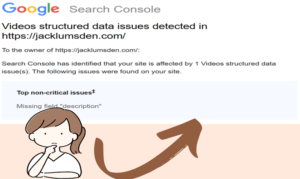Introduction to Google Cloud Hosting
In today’s digital era, businesses are increasingly relying on cloud infrastructure to host their applications and data. Google Cloud Platform (GCP) has emerged as one of the leading cloud service providers, offering a wide range of services and resources to support diverse business needs. However, with the flexibility and scalability of the cloud comes the challenge of optimizing cost and performance to ensure the best return on investment (ROI). In this article, we will explore the best practices for businesses to optimize both cost and performance on Google Cloud Hosting.
Understanding Cost Optimization on Google Cloud
Before diving into cost optimization techniques, it’s essential to understand Google Cloud’s pricing model. GCP offers various pricing options, including pay-as-you-go and committed use contracts. Pay-as-you-go allows businesses to pay for the resources they consume on an hourly basis, providing flexibility and cost control. On the other hand, committed use contracts offer significant discounts for long-term commitments, making it ideal for predictable workloads.
Businesses must also consider the cost implications of different GCP services. For example, compute instances, storage, databases, and network egress all contribute to the overall cost. Utilizing the Google Cloud Pricing Calculator can help estimate costs for various scenarios.
Performance Optimization Techniques
To ensure optimal performance on Google Cloud Hosting, businesses need to adopt specific techniques that align with their application requirements. Choosing the right compute instance types is crucial, as it directly impacts performance and cost. GCP offers various instance families with varying levels of CPU and memory, enabling businesses to match their workloads appropriately.
Another critical aspect of performance optimization is load balancing. Google Cloud Load Balancing efficiently distributes incoming traffic across multiple instances, improving responsiveness and reliability. Combined with autoscaling, which automatically adjusts the number of instances based on demand, businesses can ensure their applications can handle varying workloads without overspending on idle resources.
You can also read:
10 Tips for Crafting a Stunning WordPress Website Design
Best Practices for Cost Optimization
1. Rightsizing Instances and Storage Resources:
Regularly assess resource utilization and adjust instance sizes and storage volumes accordingly. Over time, application requirements may change, and unused resources can be downsized to save costs.
2. Leveraging Preemptible VMs:
For non-critical workloads that can tolerate interruptions, preemptible VMs provide substantial cost savings. These instances are offered at significantly discounted rates but may be terminated by Google at any time.
3. Utilizing Committed Use Contracts:
For workloads with predictable usage patterns, committing to long-term contracts can lead to substantial discounts, making it a cost-effective option for businesses.
4. Managing Resource Utilization with Google Cloud Monitoring:
Utilize Google Cloud Monitoring to gain insights into resource usage, set up alerts for anomalies, and identify opportunities for optimization.
Best Practices for Performance Optimization
1. Designing Applications for Scalability and High Availability:
Adopting a cloud-native architecture that supports scalability and high availability ensures that applications can handle sudden spikes in traffic while maintaining optimal performance.
2. Optimizing Network Configurations:
Configure networks and subnets effectively to minimize latency and ensure efficient data transfer between different components of the application.
3. Using Content Delivery Networks (CDNs):
Leverage CDNs to cache and distribute content closer to end-users, reducing server load and improving the overall user experience.
4. Leveraging Caching Mechanisms:
Implement caching at various levels (e.g., application level, database level) to minimize redundant computations and improve response times.
Combining Cost and Performance Optimization
Balancing cost and performance is a delicate task. Businesses should analyze their application requirements, usage patterns, and budget constraints to strike the right balance. Employing cost-aware architectures and leveraging Google Cloud’s recommendation engine can help make informed decisions that optimize both aspects effectively.
Real-world Case Studies
Let’s take a look at two real-world case studies to understand how businesses have achieved cost and performance optimization on Google Cloud Hosting.
Case Study 1: Cost and Performance Optimization for a Web Application
Company X, an e-commerce platform, successfully optimized their web application on Google Cloud Hosting. They adopted a microservices-based architecture, enabling them to scale individual components independently. By utilizing committed use contracts for their steady workloads and leveraging autoscaling for peak hours, they achieved significant cost savings. Additionally, they implemented content caching and employed Google Cloud Load Balancing to ensure low latency and high availability.
Case Study 2: Optimizing a Data-Intensive Workload on GCP
Company Y, a data analytics firm, needed to process massive amounts of data in real-time. They opted for preemptible VMs for their data processing jobs, which offered significant cost reductions. By implementing intelligent partitioning and optimizing their data processing pipeline, they were able to achieve superior performance without breaking the bank.
Lessons Learned and Key Takeaways
Both case studies highlight the importance of understanding application requirements, adopting cloud-native architectures, and continually monitoring and optimizing resource utilization. The key takeaway is that with careful planning and the right combination of GCP services, businesses can achieve optimal cost and performance on Google Cloud Hosting.
Security Considerations
While focusing on cost and performance optimization, businesses must not compromise on security. Google Cloud offers robust security features, such as Identity and Access Management (IAM), encryption at rest and in transit, DDoS protection, and compliance certifications. Businesses should implement these security measures to safeguard their data and applications on the cloud.
Monitoring and Continuous Improvement
Optimization on Google Cloud Hosting is not a one-time task. Businesses should set up monitoring and alerts to proactively identify cost anomalies and performance bottlenecks. Regularly analyzing data and making iterative improvements is crucial to maintaining an efficient cloud infrastructure.
Conclusion
Google Cloud Hosting provides a powerful and flexible platform for businesses to host their applications and services. By following the best practices outlined in this article, businesses can optimize both cost and performance, achieving a cost-effective and high-performing cloud environment. Remember to strike the right balance between cost savings and meeting performance requirements, while also prioritizing security and continuous improvement for long-term success on Google Cloud Hosting.








